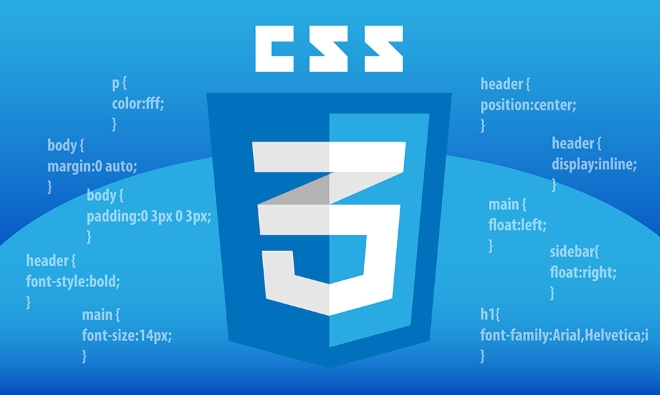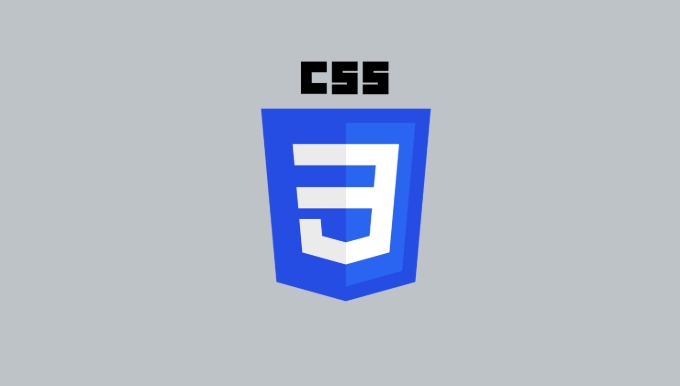 Web Front-end
Web Front-end
 CSS Tutorial
CSS Tutorial
 Can you find an element by its text content using only CSS Selectors?
Can you find an element by its text content using only CSS Selectors?
Can you find an element by its text content using only CSS Selectors?
Jul 04, 2025 am 02:02 AMYes, you can use the :contains() pseudo-class in CSS to find elements by text content. 1. The syntax is element:contains("text"), targeting any element containing the specified text. 2. It performs case-sensitive and partial matches by default, meaning it will match if the text appears anywhere within the element. 3. For exact or case-insensitive matching, JavaScript must be used, as CSS alone doesn’t support these capabilities. 4. You can combine :contains() with other selectors like classes, IDs, or nested elements for more specific targeting. 5. Limitations include inconsistent support in some older or mobile browsers and lack of precision for exact text matches. In such cases, alternatives like JavaScript offer greater control and reliability.

Yes, you can find an element by its text content using only CSS selectors — but with some limitations. CSS has a :contains() pseudo-class selector that allows you to target elements based on their text content.

Here’s how it works:

div:contains("Hello")This selector will match any <div> that contains the text "Hello" anywhere inside it.
Important Notes:
- The
:contains()selector is case-sensitive. - It matches elements where the text appears anywhere within the element, not just as a direct child.
- This selector is supported in most modern browsers (including Chrome, Firefox, and Edge), but may not be supported in older versions or certain environments like some mobile browsers.
How to Use :contains() Effectively
1. Targeting Elements Based on Exact Text
If you want to match an element that contains exactly the text you're looking for, keep in mind that :contains() does partial matches by default. For example:

p:contains("apple")This will match any paragraph containing "apple", even if the full text is "I like applesauce."
To simulate an exact match, you'd need JavaScript or another method, since CSS alone doesn't support exact text matching.
2. Combining with Other Selectors
You can combine :contains() with other CSS selectors to narrow down your targeting:
li:contains("Home") aThis would select anchor tags inside list items that contain the word "Home".
3. Using With Classes or IDs
Sometimes you'll want to refine your selection further by combining with class names or IDs:
.button:contains("Submit")This targets elements with the class .button that also contain the text "Submit".
When to Consider Alternatives
While :contains() is useful, there are situations where it might not be the best choice:
- If you need case-insensitive matching, CSS won’t help directly — you’ll need JavaScript.
- If you're working in environments that don’t fully support
:contains(), such as some older frameworks or tools. - For exact string matching, especially when partial matches could be misleading.
In those cases, using JavaScript methods like document.querySelector with textContent checks might give you more control.
Final Thoughts
The :contains() pseudo-class is a handy tool when you want to style or manipulate elements based on their text content without writing extra JavaScript. Just be aware of its behavior and limitations. It's simple and effective for many use cases, but not always perfect for precision work.
That’s basically it — nothing too complicated, but easy to overlook some of the nuances.
The above is the detailed content of Can you find an element by its text content using only CSS Selectors?. For more information, please follow other related articles on the PHP Chinese website!

Hot AI Tools

Undress AI Tool
Undress images for free

Undresser.AI Undress
AI-powered app for creating realistic nude photos

AI Clothes Remover
Online AI tool for removing clothes from photos.

Clothoff.io
AI clothes remover

Video Face Swap
Swap faces in any video effortlessly with our completely free AI face swap tool!

Hot Article

Hot Tools

Notepad++7.3.1
Easy-to-use and free code editor

SublimeText3 Chinese version
Chinese version, very easy to use

Zend Studio 13.0.1
Powerful PHP integrated development environment

Dreamweaver CS6
Visual web development tools

SublimeText3 Mac version
God-level code editing software (SublimeText3)

Hot Topics
 What is 'render-blocking CSS'?
Jun 24, 2025 am 12:42 AM
What is 'render-blocking CSS'?
Jun 24, 2025 am 12:42 AM
CSS blocks page rendering because browsers view inline and external CSS as key resources by default, especially with imported stylesheets, header large amounts of inline CSS, and unoptimized media query styles. 1. Extract critical CSS and embed it into HTML; 2. Delay loading non-critical CSS through JavaScript; 3. Use media attributes to optimize loading such as print styles; 4. Compress and merge CSS to reduce requests. It is recommended to use tools to extract key CSS, combine rel="preload" asynchronous loading, and use media delayed loading reasonably to avoid excessive splitting and complex script control.
 External vs. Internal CSS: What's the Best Approach?
Jun 20, 2025 am 12:45 AM
External vs. Internal CSS: What's the Best Approach?
Jun 20, 2025 am 12:45 AM
ThebestapproachforCSSdependsontheproject'sspecificneeds.Forlargerprojects,externalCSSisbetterduetomaintainabilityandreusability;forsmallerprojectsorsingle-pageapplications,internalCSSmightbemoresuitable.It'scrucialtobalanceprojectsize,performanceneed
 Does my CSS must be on lower case?
Jun 19, 2025 am 12:29 AM
Does my CSS must be on lower case?
Jun 19, 2025 am 12:29 AM
No,CSSdoesnothavetobeinlowercase.However,usinglowercaseisrecommendedfor:1)Consistencyandreadability,2)Avoidingerrorsinrelatedtechnologies,3)Potentialperformancebenefits,and4)Improvedcollaborationwithinteams.
 CSS Case Sensitivity: Understanding What Matters
Jun 20, 2025 am 12:09 AM
CSS Case Sensitivity: Understanding What Matters
Jun 20, 2025 am 12:09 AM
CSSismostlycase-insensitive,butURLsandfontfamilynamesarecase-sensitive.1)Propertiesandvalueslikecolor:red;arenotcase-sensitive.2)URLsmustmatchtheserver'scase,e.g.,/images/Logo.png.3)Fontfamilynameslike'OpenSans'mustbeexact.
 What is Autoprefixer and how does it work?
Jul 02, 2025 am 01:15 AM
What is Autoprefixer and how does it work?
Jul 02, 2025 am 01:15 AM
Autoprefixer is a tool that automatically adds vendor prefixes to CSS attributes based on the target browser scope. 1. It solves the problem of manually maintaining prefixes with errors; 2. Work through the PostCSS plug-in form, parse CSS, analyze attributes that need to be prefixed, and generate code according to configuration; 3. The usage steps include installing plug-ins, setting browserslist, and enabling them in the build process; 4. Notes include not manually adding prefixes, keeping configuration updates, prefixes not all attributes, and it is recommended to use them with the preprocessor.
 What are CSS counters?
Jun 19, 2025 am 12:34 AM
What are CSS counters?
Jun 19, 2025 am 12:34 AM
CSScounterscanautomaticallynumbersectionsandlists.1)Usecounter-resettoinitialize,counter-incrementtoincrease,andcounter()orcounters()todisplayvalues.2)CombinewithJavaScriptfordynamiccontenttoensureaccurateupdates.
 CSS: When Does Case Matter (and When Doesn't)?
Jun 19, 2025 am 12:27 AM
CSS: When Does Case Matter (and When Doesn't)?
Jun 19, 2025 am 12:27 AM
In CSS, selector and attribute names are case-sensitive, while values, named colors, URLs, and custom attributes are case-sensitive. 1. The selector and attribute names are case-insensitive, such as background-color and background-Color are the same. 2. The hexadecimal color in the value is case-sensitive, but the named color is case-sensitive, such as red and Red is invalid. 3. URLs are case sensitive and may cause file loading problems. 4. Custom properties (variables) are case sensitive, and you need to pay attention to the consistency of case when using them.
 Case Sensitivity in CSS: Selectors, Properties, and Values Explained
Jun 19, 2025 am 12:38 AM
Case Sensitivity in CSS: Selectors, Properties, and Values Explained
Jun 19, 2025 am 12:38 AM
CSSselectorsandpropertynamesarecase-insensitive,whilevaluescanbecase-sensitivedependingoncontext.1)Selectorslike'div'and'DIV'areequivalent.2)Propertiessuchas'background-color'and'BACKGROUND-COLOR'aretreatedthesame.3)Valueslikecolornamesarecase-insens





